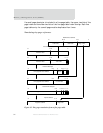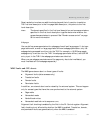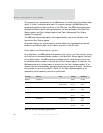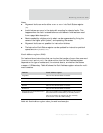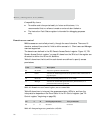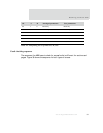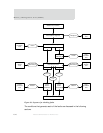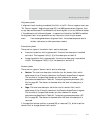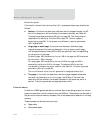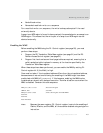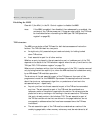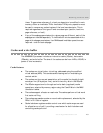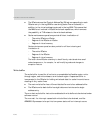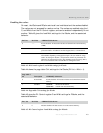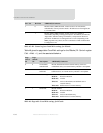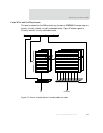
Memory Management Unit (MMU)
102
NS9750 Hardware Reference
Permission faults
If the two-bit domain field returns client (01), access permissions are checked as
follows:
Section: If the level one descriptor defines a section-mapped access, the AP
bits of the descriptor define whether the access is allowed, per Table 42:
"Interpreting access permission (AP) bits" on page 98. The interpretation
depends on the setting of the S and R bits (see "R1: Control register,"
beginning on page 58). If the access is not allowed, a section permission
fault is generated.
Large page or small page: If the level one descriptor defines a page-
mapped access and the level two descriptor is for a large or small page,
four access permission fields (AP3 to AP0) are specified, each corresponding
to one quarter of the page.
For small pages, AP3 is selected by the top 1 KB of the page and AP0 is selected
by the bottom 1 KB of the page.
For large pages, AP3 is selected by the top 16 KB of the page and AP0 is
selected by the bottom 16 KB of the page. The selected AP bits are then
interpreted in the same way as for a section (see Table 42: "Interpreting access
permission (AP) bits" on page 98).
The only difference is that the fault generated is a page permission fault.
Tiny page: If the level one descriptor defines a page-mapped access and
the level two descriptor is for a tiny page, the AP bits of the level one
descriptor define whether the access is allowed in the same way as for a
section. The fault generated is a page permission fault.
External aborts
In addition to MMU-generated aborts, external aborts cam be generated for certain
types of access that involve transfers over the AHB bus. These aborts can be used to
flag errors on external memory accesses. Not all accesses can be aborted in this way,
however.
These accesses can be aborted externally:
Page walks
Noncached reads



